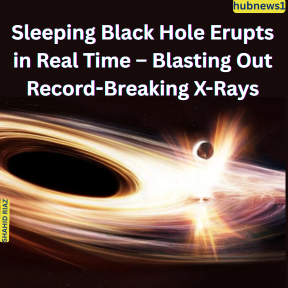
How and Where to See the "Double Sunrise" Solar Eclipse Saturday Morning
How and Where to See the “Double Sunrise” Solar Eclipse Saturday Morning Saturday’s partial solar decline offers the rare chance to see a” double daylight” in the northeastern part of the country.
Why it matters It’s the only solar decline visible from the U.S. this time and comes two weeks after the total lunar decline.
814 million people around the globe will be able to see part of the decline, which is nearly 10% of the world’s population.
What’s a partial solar decline?
A partial solar decline happens when the Moon passes between the Sun and Earth but the three do not impeccably line up.
With a partial decline, only a part of the Sun will appear to be covered, which gives it a crescent shape.
What we are watching For the March 29 decline, NASA says the Moon will pass in front of and incompletely block the Sun, casting a shadow on the corridor of the Northern Hemisphere.
Unlike last April’s total decline, the Moon wo n’t cover the entire Sun in some corridor of the country.
Decline path Where to see the partial solar decline
The big picture depends on where you are located and if the rainfall cooperates but the corridor of 13 countries will see a decline in some form.
Coastal New England is anticipated to get the stylish views, per LiveScience.com.
In Maine, over 86 of the Sun will appear transcended as it rises.
👉👉Open this link to read more articles.
Up to 57 of the Sun will be transcended in New Hampshire and 55 in Massachusetts.
Zoom out In addition to the corridor of the U.S. and Canada, the decline will also be visible in corridor of Europe, Africa, northern Asia, small corridor of South America, throughout Greenland and Iceland, as well as important of the Atlantic and Arctic abysses, NASA said.
What time is the solar decline Saturday?
A drone in NASA says the partial decline is set to begin before daylight in the U.S. and Canada on Saturday, March 29. The times listed on NASA’s website are for daylight. They include
- Baltimore 655 am to 702 am, with 3 content
- Boston 631 am to 707 am, with 43 content
- Buffalo 702 to 709 am, with 2 content
- New York City 644 am to 704 am, with 22 content
- Philadelphia 649 am to 703 am, with 12 content
- Portland, Maine 627 am to 710 am, with 64 content
- Washington, D.C. 656 am to 701 am, with 1 content
- Between the lines In western Europe and northwestern Africa, the decline will begin in the middle- to late morning, NASA said.
What’s double daylight?
Since the Sun is rising at the time of the decline in the U.S., some will see the vision of a” double daylight.”
- From some locales, the Moon’s figure will make the rising Sun appear like it has two cornucopias, according to LifeScience.com.
- Space.com says for littoral locales in northern Maine, New Brunswick and Quebec, it may be possible to see” devil’s cornucopias” when the eclipsed Sun rises.
How, when to see the “Blood Moon” total lunar eclipse
Editor’s note The decline took place on Thursday night. View prints of the decline from around the world then.
Set an alarm and monuments to look at the sky for the rare chance to see a Blood Moon total lunar decline late Thursday night and early Friday morning.
The big picture It’s the only lunar decline visible from the U.S. this time and the first total lunar decline since November 2022.
All of the phases of the decline are anticipated to last around six hours.
North America and South America are anticipated to get the stylish views of the decline, but it’ll be visible across the Western Semicircle.
Total lunar decline and Blood Moon
A lunar decline occurs when the Sun, Earth and Moon align so the moon passes into Earth’s shadow, according to NASA.
Total lunar declines occur when the Moon passes into the dark shadow of the Earth.
Lunar declines are occasionally called” Blood Moons” because the Moon will turn a sanguine and bobby
tinge, NASA said.
What time does the lunar decline start tonight?
When to watch The hours for when the lunar decline will be visible vary by time zone.
The original phase of the decline, called the penumbral decline, begins at 1157 pm EDT and 857 pm PDT Thursday, NASA said in its timeline.
The partial decline begins at 109 am EDT Friday, which is 1009 pm PDT Thursday, and as the Moon moves into the umbra” it looks like a bite is being taken out of the lunar fragment.”
summation begins at 226 am EDT Friday or 1126 pm PDT Thursday. In summation, the Moon is” bepainted
What time does the total lunar decline end?
summation ends at 331 am EDT/ 1231 am PDT.
The partial decline ends when the Moon has set in 447 am EDT or 147 am PDT.
The penumbral decline ends when the Moon has set in 6 am EDT or 3 am PDT.
How to see the total lunar decline live
What we are watching: Unlike a solar decline, anyone with a view of the Moon during a lunar decline will be suitable to see it as it occurs, NASA said. Special outfits are not demanded to observe a lunar decline.
” Binoculars or a telescope will enhance the view,” NASA said, noting a” dark terrain down from bright lights makes for the stylish viewing conditions.”
Timeanddate.com will have a live slice of the lunar decline starting at 1 am EDT Friday.
👉👉Open this link to read more articles.
FAQ:
1. What is a “double sunrise” solar eclipse?
A double sunrise eclipse occurs when the moon partially covers the sun at sunrise, making it appear as if the sun dips back below the horizon and rises again. This creates the illusion of two sunrises in one morning.
2. When is the double sunrise eclipse happening?
The eclipse will take place this Saturday morning. The exact timing depends on your location, but the best viewing will be just after sunrise.
3. Where can I see the double sunrise eclipse?
The effect will be most visible in:
- Northeastern U.S. & Eastern Canada
- Parts of Europe (Northern & Western regions)
- Limited areas in Asia
Check eclipse maps like TimeandDate.com for exact visibility in your area.
4. Do I need special glasses to watch the eclipse?
Yes! Never look directly at the sun without ISO-certified solar eclipse glasses (ISO 12312-2). Regular sunglasses are not safe.
5. What if I don’t have eclipse glasses?
You can still watch safely using:
- A pinhole projector (project the sun’s image onto paper)
- A colander or sieve (creates multiple eclipse images)
- A live stream from NASA or astronomy websites
6. Can I use my phone or camera to photograph the eclipse?
Yes, but:
- Use a solar filter to protect your camera sensor.
- Avoid digital zoom—it reduces quality.
- Use a tripod for stability in low light.
7. What time should I be outside to see it?
Arrive at least 15–30 minutes before sunrise to find a good spot with a clear eastern horizon.
8. Will clouds ruin the view?
Unfortunately, heavy clouds can block the eclipse. Check the weather forecast and consider traveling to a clearer location if possible.
9. How often does this happen?
A double sunrise eclipse is rare because it requires:
- The eclipse to occur exactly at sunrise.
- The moon’s position to create the “dip and rise” effect.
The next similar event may not happen for several years.
10. Where can I find live updates?
Follow:
- NASA’s Eclipse Website
- TimeandDate.com Live Stream
- Local astronomy clubs or planetariums






